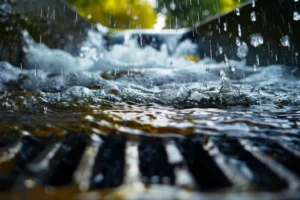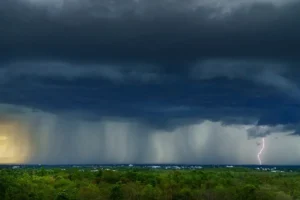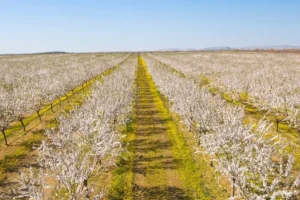Introduction
Groundwater, often overlooked in the realm of natural resources, serves as a lifeline for billions worldwide. Beneath our feet lies a vast reservoir of freshwater, sustaining ecosystems, agriculture, and human communities. It is important to understand the world of groundwater, its significance, characteristics, utilization, challenges, and sustainable management practices.
Understanding Groundwater
Groundwater refers to water stored underground in aquifers, layers of permeable rock, sediment, or soil where water can accumulate. It constitutes a significant portion of the Earth’s freshwater resources, with estimates suggesting it accounts for around 30% of the world’s freshwater supply.
Groundwater originates primarily from precipitation that infiltrates into the ground. However, the journey doesn’t end there. The process of groundwater recharge is dynamic and complex, influenced by various factors:
· Precipitation Patterns: Regions experiencing high rainfall or snowmelt contribute more water to groundwater reserves.
· Topography: Groundwater flow is often directed by the shape of the land, with water moving from higher to lower elevations.
· Geology: The composition and structure of underlying rocks and sediments greatly influence groundwater storage and movement. For instance, permeable formations like sandstone and limestone facilitate groundwater flow, while impermeable layers act as barriers.
· Human Activities: Land use practices, such as urbanization, agriculture, and groundwater pumping, can alter natural recharge processes, leading to overdraft and depletion of groundwater resources.
The Importance of Groundwater
Groundwater serves various purposes, from supplying drinking water to sustaining agriculture, industry, and ecosystems. In many regions, it’s the primary source of freshwater, especially in arid and semi-arid areas where surface water is scarce. Additionally, groundwater supports wetlands, springs, and base flow in rivers, crucial for biodiversity and habitat conservation. Here are some key reasons why groundwater is so important:
· Lifeline for Communities: Groundwater serves as a primary source of drinking water for over two billion people globally. In many regions, especially arid and semi-arid areas, groundwater is the only reliable source of freshwater. It provides a lifeline for communities, ensuring access to clean and safe drinking water for drinking, cooking, and sanitation.
· Agricultural Backbone: The agricultural sector heavily relies on groundwater for irrigation, especially in regions where surface water sources are limited or unreliable. Groundwater irrigation systems sustain crops, enhance food security, and support livelihoods for millions of farmers worldwide. Without groundwater, agriculture as we know it would be severely constrained, impacting global food production and supply chains.
· Industrial Support: Industries across various sectors, including manufacturing, mining, energy production, and food processing, depend on groundwater for their operations. Groundwater serves as a vital resource for cooling systems, processing facilities, and as a component in products. Its availability and quality directly influence industrial productivity, economic growth, and sustainability efforts.
· Ecosystem Vitality: Groundwater sustains diverse ecosystems, from wetlands and springs to riparian zones and underground rivers. These ecosystems provide habitat for unique flora and fauna, contribute to biodiversity, and support vital ecological functions such as water purification, nutrient cycling, and flood regulation. Groundwater discharge also maintains base flow in rivers and sustains aquatic life during dry periods.
· Buffer Against Droughts: Groundwater acts as a natural buffer against droughts and climate variability. During periods of low precipitation or surface water scarcity, groundwater provides a reliable water supply for ecosystems and human communities. Its slow response to changes in climate and weather patterns can help mitigate the impacts of droughts and water shortages.
· Cultural and Recreational Value: Groundwater holds cultural and recreational significance for many communities worldwide. Sacred springs, ancient wells, and underground rivers are integral parts of cultural heritage and spiritual practices. Additionally, groundwater-fed lakes, ponds, and streams provide opportunities for recreation, such as fishing, boating, and swimming, enhancing quality of life and well-being.
Threats to Groundwater
Despite its importance, groundwater faces several significant threats:
· Over-extraction: Excessive pumping of groundwater for agriculture, industry, and domestic use can deplete aquifers faster than they can be replenished. This over-extraction leads to falling water tables, reduced water quality, and the drying up of wells. Once depleted, aquifers may take decades or even centuries to recharge, perpetuating a cycle of scarcity.
· Groundwater Pollution: Groundwater can be contaminated by pollutants such as pesticides, fertilizers, industrial chemicals, and waste from landfills and septic systems. Once polluted, groundwater is challenging and expensive to clean up.
· Climate Change: Changes in precipitation patterns and increased evaporation due to rising temperatures can affect the replenishment of groundwater. Prolonged droughts can reduce the amount of water entering aquifers.
· Land Use Changes: Urbanization and deforestation can alter the natural infiltration of water into the ground, reducing groundwater recharge and increasing surface runoff.
· Population Growth: Rapid urbanization and population growth place immense pressure on groundwater resources, particularly in urban areas where demand for water outstrips supply. Unplanned development and inadequate water management exacerbate the problem.
Groundwater and Climate Change
Climate change poses additional challenges to groundwater resources, altering precipitation patterns, increasing temperatures, and intensifying extreme weather events. These changes impact groundwater recharge rates, availability, and quality; exacerbating existing pressures on water supplies. Adaptation measures such as replenishing aquifers during wet periods, enhancing water efficiency, and protecting recharge areas are vital for mitigating the impacts of climate change on groundwater resources.
Sustainable Groundwater Management
To ensure the long-term sustainability of groundwater resources, effective management strategies are essential. This includes implementing groundwater monitoring networks to track water levels and quality, regulating extraction rates to prevent overexploitation, and promoting water conservation practices. Integrated water resource management approaches, incorporating stakeholder engagement, and scientific research are crucial for balancing competing demands and safeguarding groundwater for future generations.
Innovations in Groundwater Management
Advancements in technology offer promising solutions for addressing groundwater challenges. Remote sensing techniques, Geographic Information Systems (GIS), and modeling tools aid in mapping aquifer characteristics, monitoring water levels, and predicting groundwater dynamics. Furthermore, innovative approaches like Managed Aquifer Recharge (MAR), artificial recharge, and groundwater banking systems enhance groundwater storage and replenishment, contributing to sustainable water management practices.
Effective Strategies for Groundwater Replenishment
· Rainwater Harvesting: Rainwater harvesting involves capturing and storing rainwater for beneficial use, such as irrigation, groundwater recharge, and domestic water supply. Techniques range from simple rain barrels and rooftop catchment systems to large-scale storage reservoirs and infiltration basins. By capturing rainwater before it runs off the land surface, rainwater harvesting can enhance groundwater recharge and reduce reliance on surface water sources.
· Managed Aquifer Recharge (MAR): Managed aquifer recharge involves deliberately augmenting natural groundwater recharge processes to replenish depleted aquifers. MAR techniques include spreading basins, injection wells, recharge ponds, and subsurface infiltration galleries. These methods allow excess surface water or treated wastewater to percolate into the ground, replenishing groundwater reserves and improving water quality.
· Permeable Surfaces and Green Infrastructure:Permeable surfaces, such as permeable pavement, green roofs, and vegetated swales, allow rainwater to infiltrate into the ground instead of becoming surface runoff. By reducing stormwater runoff and increasing groundwater recharge, green infrastructure helps replenish aquifers and mitigate urban flooding. Incorporating permeable surfaces into urban planning and development can promote sustainable water management and enhance groundwater resources.
· Soil and Land Management Practices: Improving soil health and land management practices can enhance infiltration and groundwater recharge rates. Practices such as conservation tillage, cover cropping, agroforestry, and riparian buffer strips help to reduce soil erosion, increase water retention, and promote infiltration. By restoring natural hydrological processes and protecting recharge areas, soil and land management practices contribute to groundwater replenishment and watershed health.
· Protecting Natural Recharge Areas: Preserving and restoring natural recharge areas, such as wetlands, riparian zones, and floodplains, is essential for maintaining groundwater recharge rates. These ecosystems play a crucial role in capturing and storing water, allowing it to slowly percolate into the ground and replenish aquifers. Protecting recharge areas from development, pollution, and degradation helps to safeguard groundwater resources and maintain ecological integrity.
The Role of Policy and Governance
Effective policy frameworks and governance structures are essential for promoting sustainable groundwater management at local, national, and global levels. This includes establishing regulations for groundwater abstraction, setting groundwater quality standards, and incentivizing water conservation and recharge initiatives. Integrated water resource management plans, supported by collaboration among governments, communities, and stakeholders, facilitate coordinated action and equitable distribution of groundwater resources.
Conclusion
Groundwater, often unseen but indispensable, plays a vital role in sustaining ecosystems, supporting livelihoods, and ensuring water security worldwide. As we confront growing challenges such as overexploitation, pollution, and climate change, it’s imperative to prioritize sustainable groundwater management practices. By adopting innovative technologies, implementing effective policies, and fostering collective action, we can safeguard this precious resource for current and future generations, ensuring a resilient and water-secure future for all.




